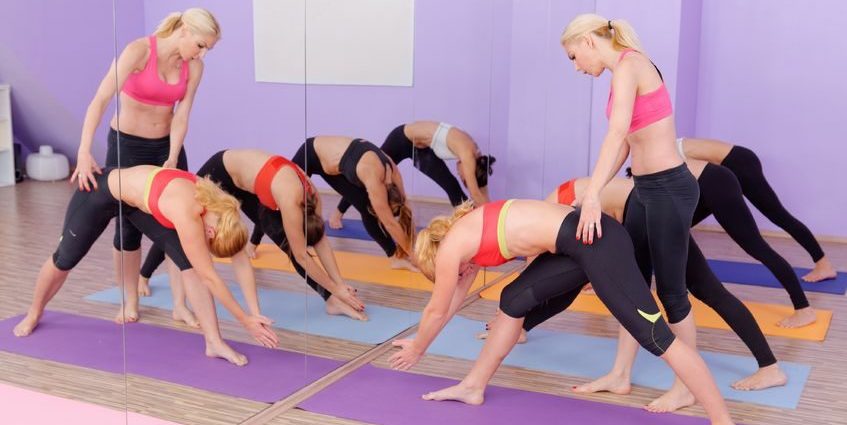The Bikram Yoga is a variant of classical Yoga, being the result of the combination of postures of different types of Yoga to achieve a healthy body, happiness, and inner peace. It has been just over 40 years since its creation by Bikram Choudhury, implanting itself in Spain over the past decade as one of the most demanding yoga variants with the highest number of health benefits.
Definition of Bikram Yoga:
Bikram Yoga, also known as “hot yoga,” is a yoga style that focuses on 26 asanas or postures, all performed in series, performing in series and repeating twice asana house for about 90 minutes. Another novelty that includes Bikram Yoga is that it has to be practiced in a room at about 42 degrees and with a very high humidity index, with heat and sweat being two basic elements in its realization.
According to specialists, this high temperature seeks to reproduce the humidity and temperature conditions of India. Conditions that favor vasodilation with all the benefits it entails.
The Bikram collects 26 of the 84 classic postures that make up the Hatha Yoga, in addition to two pranayamas or breaths, at the beginning and end of the class, these being the deep breath of foot and the breath of fire. The series of asanas aims to stretch and heat the muscles, ligaments, and tendons in the order in which they must be stretched.
Benefits of Bikram Yoga:
The benefits of Bikram Yoga are the same ones that seek other styles of physical yoga, the main difference is that doing the classes in a warm and humid environment. Thus, this sauna-like environment favors blood circulation, muscle elongation, and concentration, enhancing flexibility and facilitating the realization of asanas.
Other interesting benefits of practicing Bikram Yoga are:
- Strengthen all the muscles.
- Remove toxins that accumulate in the body through sweat, even sweating up to one litre per session.
- Optimizes cardiovascular conditions.
- You get total relaxation.
- Helps prevent breathing problems.
- It’s low impact.
- It’s therapeutic, especially for the back.
- Helps lose weight.
The Most Typical Bikram Yoga Postures:
The Bikram Yoga session begins with a deep standing breath or Pranayama, ending with another breathing exercise, a firm posture breath, or Kapalbhati in Vajrasana. It is important to go to each session perfectly hydrated and without having eaten before, in addition to being careful in the case of pregnant women and people with cardiovascular problems.
The positions that make up the sessions of Bikram Yoga are the following, by this order of realization:
Ardha-Chandrasana with Pada Hastasana (Position of the half moon with hands at the feet)
- Utkatasana (Weird Position)
- Garudasana (Eagle Position)
- Dandayamana-Janushirasana (Foet, in front of the knee)
- Dandayamana-Dhanurasana (Position in bow, standing)
- Tuladandasan (Position of the pole swinging.)
- Dandayamana-Bibhaktapada-Paschimotthanasana (Standing, separate legs, stretching)
- Trikanasana (Treangle Position):
- Dandayamana-Bibhaktapada-Janushirasan (Foot, legs apart, knee)
- Tadasana (Mountain Position)
- Padangustasan (Standing at the tip of your feet)
- Savasana (dead body power)
- Pavanamuktasana (Power Removing Position)
- Abdominal
- Bhujangasana (Cut-Position)
- Salabhasana (Silgly Position)
- Poorna-Salabhasana (full lobster position)
- Dhanurasana (Position of the arc)
- Supta-Vajrasana (fixed and firm Position)
- Ardha-Kurmasana (Position of the half turtle)
- Ustrasana (Cerone Position)
- Sasangasana (Bunny Position)
- Janushirasana with Paschimotthanasana (Far to the knee with stretching)
- Ardha-Matsyendrasana (Torsession of the spine)
- Kapalbhati in Vajrasana (Respiration of fire).
